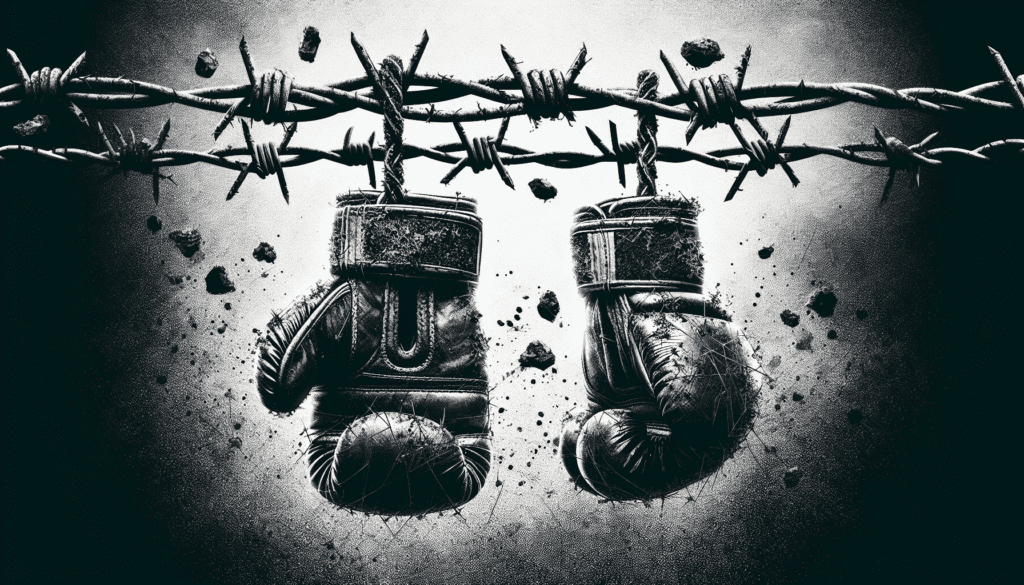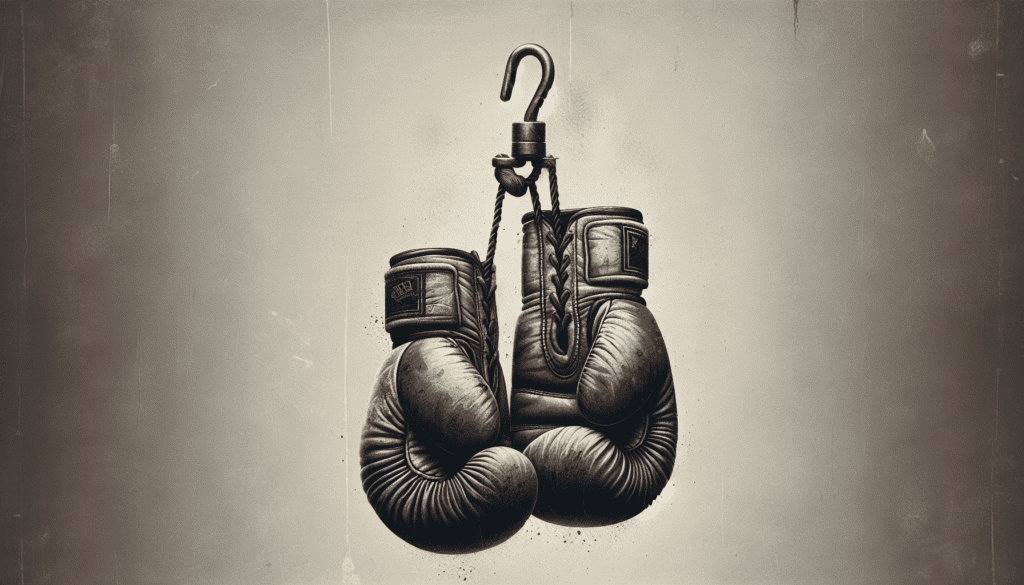If you’re just starting out in MMA training, building up your endurance is crucial for success. Whether you’re aiming to compete or simply want to get in better shape, having the stamina to keep pushing forward is key. In this article, you’ll discover five tried-and-true tips that will help boost your endurance and take your MMA training to the next level. From incorporating high-intensity interval training to focusing on proper nutrition, these tips will have you lasting longer and performing at your best in no time. So grab your gear and get ready to amp up your workouts like never before!

Proper conditioning exercises
Incorporate cardio into your training routine
Cardiovascular endurance plays a crucial role in MMA training as it allows you to sustain high-intensity movements for extended periods. It is essential to incorporate cardio exercises into your training routine to build your endurance levels. Activities like running, cycling, swimming, or using the elliptical machine are excellent options to improve your cardiovascular fitness. Aim for at least 30 minutes of cardio workouts three to five times a week to enhance your stamina and overall performance in the octagon.
Include high-intensity interval training
High-Intensity Interval Training (HIIT) is a highly effective method to improve your endurance for MMA. HIIT involves short bursts of intense exercise followed by brief recovery periods. This style of training helps push your body to its limits, simulating the intensity of MMA fights. Incorporate exercises like burpees, jumping jacks, mountain climbers, or kettlebell swings into your HIIT workouts. Start with intervals of 20 seconds of work and 10 seconds of rest, gradually increasing the duration as your fitness level improves.
Utilize circuit training
Circuit training is an excellent way to improve both cardiovascular endurance and muscular strength simultaneously. It involves performing a series of exercises with little to no rest in between. This training method keeps your heart rate elevated, mimicking the demands of MMA fights. Combine exercises like push-ups, squats, lunges, jump rope, and medicine ball slams into a circuit. Perform each exercise for a set time or number of repetitions, and then move on to the next one. Aim for three to five circuits with minimal rest in between to challenge your endurance and overall fitness.
Focus on plyometric exercises
Plyometric exercises are explosive movements that engage multiple muscle groups and require a high level of power and endurance. They are highly beneficial for MMA training as they improve your speed, agility, and overall explosiveness. Incorporate exercises like box jumps, lateral jumps, burpees, or medicine ball throws into your workouts. Start with two to three sets of ten repetitions for each exercise, focusing on quality rather than quantity. Gradually increase the intensity and difficulty of your plyometric exercises as you progress to build your endurance effectively.
Build a strong aerobic base
Start with steady-state cardio
Steady-state cardio is an essential foundation for building endurance in MMA training. It involves maintaining a consistent intensity level throughout your workout, typically at a moderate level of effort. Activities like jogging, swimming, or cycling at a steady pace for an extended duration will help improve your aerobic fitness. Begin with 20-30 minutes of steady-state cardio two to three times per week and gradually increase the duration to challenge your endurance capabilities.
Progress to longer duration workouts
Once you have built a sufficient aerobic base through steady-state cardio, it’s time to progress to longer duration workouts. As your endurance improves, aim to extend the length of your cardio sessions. Increase the duration by adding a few extra minutes each week or every other week, gradually working towards 45-60 minute workouts. This progression will train your body to tolerate prolonged periods of physical exertion, making you more resilient during MMA training and matches.
Include different forms of cardio
Variety is key when it comes to building endurance. Incorporating a range of cardio activities into your training routine will work different muscle groups and keep your workouts exciting. Besides running or cycling, try swimming laps, rowing, jumping rope, or using the stair climber. These activities engage various muscle groups and challenge your cardiovascular system in different ways, ensuring well-rounded endurance development. By including different forms of cardio, you’ll also prevent boredom and maintain your motivation to continue training.
Implement interval training
Include sprints in your training
Sprints are an excellent way to boost your endurance and explosive power for MMA training. Incorporate sprint intervals into your workouts by running at maximum effort for a short distance, followed by a short rest period. For example, sprint at full speed for 20-30 seconds, then rest or walk for 1-2 minutes before repeating. Start with a few sprints and gradually increase the number as your fitness improves. The intensity of sprints will simulate the demands of bursts of activity in MMA, improving your ability to recover quickly and sustain high-intensity efforts.
Try Tabata workouts
Tabata workouts are a popular form of high-intensity interval training that involves intense, short bursts of exercise followed by brief rest periods. A typical Tabata workout consists of 20 seconds of all-out effort, followed by 10 seconds of rest, repeated for a total of eight rounds. You can choose various exercises like burpees, squats, or kettlebell swings, performing them at maximum effort during the active intervals. Tabata workouts are efficient and time-saving, making them a perfect choice for improving endurance and overall fitness.
Utilize fartlek training
Fartlek training, a Swedish term meaning “speed play,” is a form of interval training that involves alternating between periods of faster and slower speeds. During your cardio sessions, incorporate bursts of high-intensity effort followed by periods of lower intensity or active recovery. For example, while running, increase your pace to a challenging level for a couple of minutes, then slow down to a comfortable speed for recovery. Repeat this pattern throughout your workout, gradually increasing the duration and intensity of the high-intensity intervals as your endurance improves.
Incorporate speed drills
Speed drills specifically target your explosive power and agility, which are essential in MMA. These exercises help improve your acceleration, deceleration, and overall speed. Incorporate exercises like ladder drills, cone drills, or shuttle runs into your routine. Practice quick direction changes, including lateral movements and backpedaling. Aim for two to three sets of 10-15 repetitions for each drill, focusing on proper form and technique. As you become more proficient, increase the intensity and difficulty of your speed drills to enhance your endurance and agility.
Develop muscular endurance
Include bodyweight exercises in your routine
Bodyweight exercises are an excellent way to build muscular endurance without the need for equipment. They engage multiple muscle groups simultaneously, improving overall strength and stamina. Incorporate exercises like push-ups, squats, lunges, planks, and mountain climbers into your routine. Aim for higher repetitions with proper form, focusing on maintaining a steady pace throughout the sets. As you progress, increase the number of sets or add variations to challenge different muscle groups and further develop your muscular endurance.
Incorporate resistance training
Resistance training is a crucial component of MMA training, as it helps develop functional strength and endurance. Incorporate exercises that target the major muscle groups, such as deadlifts, squats, bench presses, rows, and overhead presses, into your routine. Focus on moderate to high repetitions and shorter rest periods to enhance muscular endurance. Gradually increase the resistance or weight as your strength improves to continue challenging your muscles and improving your endurance capabilities.
Focus on compound exercises
Compound exercises, also known as multi-joint movements, involve multiple muscle groups and joints working together. These exercises mimic the complex movements and demands of MMA. Squats, deadlifts, bench presses, pull-ups, and lunges are examples of compound exercises. Include them in your training routine to build overall strength, stability, and endurance. Start with lighter weights and focus on proper form and technique. As you progress, gradually increase the resistance to continue challenging your muscles and improving your endurance capacity.
Utilize supersets and circuits
Supersets and circuits are efficient training techniques that help improve muscular endurance. Supersets involve performing two exercises back-to-back without resting in between. For example, pairing push-ups with dumbbell rows or squats with overhead presses. Circuits, as mentioned earlier, are a series of exercises performed one after the other with minimal rest. Combining both supersets and circuits in your routine maximizes your time in the gym and challenges your muscles to sustain effort and endure fatigue. These training strategies will improve your overall muscular endurance, making you more resilient during MMA training and matches.

Proper nutrition
Ensure adequate calorie intake
Proper nutrition is vital for improving endurance and overall performance in MMA training. One essential aspect is ensuring an adequate calorie intake to fuel your workouts and support recovery. Caloric needs vary depending on factors like your body composition, training intensity, and goals. Consult with a registered dietitian or nutritionist to determine your specific caloric needs. Aim to consume balanced meals that include a mix of carbohydrates, proteins, and healthy fats to provide your body with the energy it needs to perform optimally.
Consume a balanced diet
A balanced diet is crucial for supporting endurance and overall health. It should include a variety of fruits, vegetables, lean proteins, whole grains, and healthy fats. Focus on nutrient-dense foods that provide essential vitamins, minerals, and antioxidants. Incorporate leafy greens, lean meats, fish, whole grains, nuts, seeds, and healthy oils into your meals. Stay away from highly processed foods, excessive sugar, and unhealthy fats, as they can negatively impact your energy levels and overall performance. A well-balanced diet provides the necessary fuel for your body, optimizing endurance and recovery.
Include complex carbohydrates
Carbohydrates are the primary source of energy for endurance activities. They supply your muscles with glycogen, which is stored in the body and used as fuel during exercise. Include complex carbohydrates like whole grains, legumes, fruits, and starchy vegetables in your meals to provide a steady release of energy. Avoid excessive consumption of simple carbohydrates, such as sugary snacks and beverages, as they provide a quick energy boost but can lead to energy crashes later on. Opt for carbohydrates that provide sustained energy, allowing you to fuel your MMA training sessions and maintain endurance throughout.
Incorporate sufficient protein
Protein is essential for muscle repair, growth, and recovery. It also plays a vital role in maintaining and promoting muscular endurance. Include lean sources of protein like chicken, turkey, fish, eggs, tofu, or Greek yogurt in your meals and snacks. Aim for a protein intake of approximately 0.8-1 gram per pound of body weight to support your muscle development and endurance. Additionally, consuming protein-rich snacks after your workouts can help kickstart the recovery process.
Stay hydrated
Proper hydration is often overlooked but crucial for maintaining your endurance during intense training sessions. Dehydration can lead to a decrease in performance, energy levels, and overall stamina. Stay hydrated by drinking water throughout the day, both before and after your workouts. During training, sip on water regularly to replenish fluids lost through sweat. Consider adding electrolytes to your water or consuming sports drinks during more prolonged or intense training sessions to replenish essential minerals lost during sweating. By staying adequately hydrated, you’ll optimize your endurance and overall performance in MMA training.
Get enough rest and recovery
Prioritize sleep
Sleep is a critical component of recovery and essential for maintaining endurance. Aim for 7-9 hours of quality sleep each night to allow your body to repair and regenerate. During sleep, your body releases growth hormones, repairs damaged tissues, and consolidates learning and memory. Poor sleep can lead to decreased endurance, increased fatigue, and impaired cognitive function. Establish a regular sleep routine, create a comfortable sleeping environment, limit electronic device usage before bed, and prioritize sleep as an essential part of your MMA training.
Allow for rest days
While it is crucial to train consistently, it is equally important to allow your body time to rest and recover. Rest days are essential for preventing overtraining, reducing the risk of injury, and optimizing endurance. Incorporate one to two rest days into your weekly training schedule to allow your muscles and energy systems to recover and adapt. On rest days, engage in light activities like stretching, foam rolling, or gentle yoga to promote circulation and flexibility. Remember, rest and recovery are just as vital to your endurance progress as training itself.
Incorporate active recovery
Active recovery refers to engaging in low-intensity activities to promote blood flow and aid in muscle repair and recovery. Instead of complete inactivity on rest days, consider incorporating active recovery sessions into your routine. Activities like walking, swimming, or light cycling can help loosen tight muscles, circulate oxygenated blood, and reduce muscle soreness. Active recovery sessions should be gentle and enjoyable, giving your body a chance to recover while still staying in motion.
Utilize foam rolling and stretching
In addition to rest and active recovery, incorporating foam rolling and stretching into your routine can significantly aid in muscle recovery and flexibility. Foam rolling, also known as self-myofascial release, involves using a foam roller to apply pressure to areas of tightness or trigger points in your muscles. This technique helps release muscle tension, enhance blood flow, and promote faster recovery. Pair foam rolling with dynamic stretching before workouts and static stretching after workouts to improve your flexibility, reduce muscle soreness, and enhance your overall endurance.

Mental fortitude and focus
Practice mindfulness and visualization techniques
Endurance in MMA training is not solely about physical capabilities; it is also about mental fortitude and focus. To build mental resilience, incorporate mindfulness and visualization techniques into your training routine. Mindfulness exercises, such as deep breathing or meditation, can help reduce stress, enhance mental clarity, and improve focus during training and matches. Visualization techniques involve mentally rehearsing your performance, imagining yourself enduring challenges, and visualizing success. These practices train your mind to stay calm, focused, and determined, contributing to increased endurance and overall performance.
Set realistic goals
Setting realistic goals is essential for maintaining motivation and continuing to progress in your endurance training. Break down your larger endurance goals into smaller, achievable milestones. For example, aim to run an extra mile or increase the duration of your cardio workouts by five minutes per week. Achieving these smaller goals provides a sense of accomplishment, motivating you to continue pushing yourself and improving your endurance. Remember that building endurance takes time, and setting realistic, attainable goals will keep you on track and make the process more enjoyable.
Stay motivated and consistent
Endurance training can be challenging, but maintaining motivation and consistency are key. Find what motivates you to keep pushing through the tough moments. It could be envisioning your goals, listening to motivational music or podcasts, or training with a supportive partner. Surround yourself with like-minded individuals or join online communities to stay inspired and accountable. Consistency is equally crucial, as regular training sessions allow your body to adapt and improve over time. Even on days when motivation is low, showing up and putting in the work will contribute to building your endurance foundation.
Gradually increase training intensity
Start with manageable workouts
When beginning your MMA endurance training journey, it’s essential to start with manageable workouts. Rushing into high-intensity or long-duration exercises without proper conditioning can lead to burnout or injury. Gradually ease into your training routine by starting with low to moderate intensity workouts. Find an appropriate level of effort that challenges you but doesn’t leave you overly fatigued or sore. By starting with manageable workouts, you allow your body to adapt and build a solid foundation for more intense endurance training as you progress.
Progressively increase duration and intensity
As your endurance improves, gradually increase the duration and intensity of your training sessions. Incorporate longer runs, add more intense intervals, or increase resistance during strength training exercises. Progressing gradually ensures that your body has time to adapt and prevents overexertion or injuries. Listen to your body’s signals and adjust the intensity or duration if necessary. Consistency is key, but it’s equally important to avoid pushing yourself beyond your limits too quickly. By steadily increasing the intensity and duration, you’ll continue to challenge your endurance and make consistent progress.
Listen to your body’s signals
Your body is an excellent guide during endurance training. Pay attention to any discomfort, pain, or signs of overexertion. Pushing through pain can lead to injuries and setbacks in your endurance journey. Make sure to differentiate between the discomfort that comes with pushing your limits and the pain that indicates a potential injury. If you experience persistent pain or discomfort, consult a healthcare professional to address the issue promptly. By listening to your body’s signals, you can make informed decisions and adjust your training to optimize your endurance progress safely.

Train with a partner or join a gym
Find a training partner
Training with a partner can significantly enhance your motivation, endurance, and overall training experience. Look for someone who shares your enthusiasm for MMA and has similar goals. Training with a partner provides accountability, support, and friendly competition, pushing you to work harder and sustain your endurance efforts. Partner drills, sparring sessions, or simply having someone to train alongside can make your workouts more enjoyable and challenging. Find a compatible training partner to maximize the benefits of training and foster a supportive environment.
Join a reputable MMA gym
Joining a reputable MMA gym can provide you with the structure, guidance, and expertise needed to improve your endurance effectively. Look for a gym with experienced instructors, a supportive community, and a focus on comprehensive MMA training. In a professional gym setting, you’ll have access to a variety of equipment, training partners of different skill levels, and experienced coaches who can guide you in your endurance journey. MMA gyms often offer specialized conditioning classes that target endurance and simulate the demands of MMA fights. Joining a reputable gym will expose you to a well-rounded training program and help you build endurance in a safe and progressive manner.
Participate in group classes and sparring sessions
Group classes and sparring sessions are excellent opportunities to test and improve your endurance in a practical setting. Group classes often involve high-intensity circuit training, HIIT workouts, and skill-based drills that challenge both your physical fitness and mental resilience. These sessions simulate real-life MMA scenarios, increasing your endurance while improving your technique and decision-making. Sparring sessions allow you to apply your endurance and skills in a controlled, yet realistic environment. By engaging in group classes and sparring, you’ll experience the physical and mental demands of MMA training, enhancing your endurance and overall performance.
Track your progress
Record your workouts and improvements
To monitor your endurance progress, it is essential to record your workouts and track your improvements over time. Keep a training journal or use a fitness tracking app to document your workouts, including duration, intensity, and any specific accomplishments. Record metrics such as running distances, personal records, or the number of repetitions completed during resistance training. By tracking your progress, you can visually see how far you’ve come, stay motivated, and identify areas for further improvement. Celebrate each milestone and use them as stepping stones to push your endurance to new heights.
Set benchmarks and reassess regularly
Setting benchmarks is a valuable tool for assessing and improving your endurance. Regularly schedule benchmark workouts to evaluate your progress and set new goals. For example, time yourself during a run or measure the number of repetitions you can complete in a specific exercise within a given time frame. Repeating these benchmark workouts periodically allows you to measure your improvement objectively. Use the results to adjust your training intensity or identify areas that may need additional focus. By reassessing regularly, you can fine-tune your training strategy and continue advancing your endurance capabilities.
Seek professional guidance if needed
If you’re a beginner or looking to take your endurance training to the next level, seeking professional guidance can be immensely beneficial. Consider working with a personal trainer, coach, or sports-specific professional to provide expert advice and create a tailored training program. These professionals can assess your current fitness level, identify areas for improvement, and design a plan that optimizes your endurance progress. They can also guide you in proper form, technique, and periodization to ensure balanced progression and minimize the risk of injury. Seeking professional guidance can fast-track your endurance development and provide invaluable support throughout your MMA training journey.
In conclusion, building endurance for MMA training requires focus, consistency, and a holistic approach. Incorporating proper conditioning exercises that involve cardio, HIIT, circuit training, and plyometrics will push your cardiovascular fitness to new heights. Building a strong aerobic base through steady-state cardio, longer-duration workouts, and incorporating different forms of cardio will enhance your endurance capabilities. Implementing interval training through sprints, Tabata workouts, fartlek training, and speed drills will improve your explosive power and recovery. Developing muscular endurance through bodyweight exercises, resistance training, compound exercises, and superset/circuit workouts will ensure your muscles can withstand the demands of MMA. Proper nutrition, including adequate calorie intake, a balanced diet, complex carbohydrates, sufficient protein, and hydration, will fuel your endurance and support your overall performance. Prioritizing rest and recovery with adequate sleep, rest days, active recovery, and foam rolling/stretching will optimize your endurance gains. Cultivating mental fortitude and focus through mindfulness, visualization, goal-setting, motivation, and consistency will strengthen your mindset for endurance training. Gradually increasing training intensity while listening to your body’s signals will ensure steady progress without overexertion. Training with a partner or joining a reputable MMA gym will provide support, guidance, and practical training opportunities to enhance your endurance. Tracking your progress, setting benchmarks, and seeking professional guidance if needed will keep you accountable and ensure continued improvement. By following these comprehensive tips, beginners in MMA training can boost their endurance and set a solid foundation for their martial arts journey.

